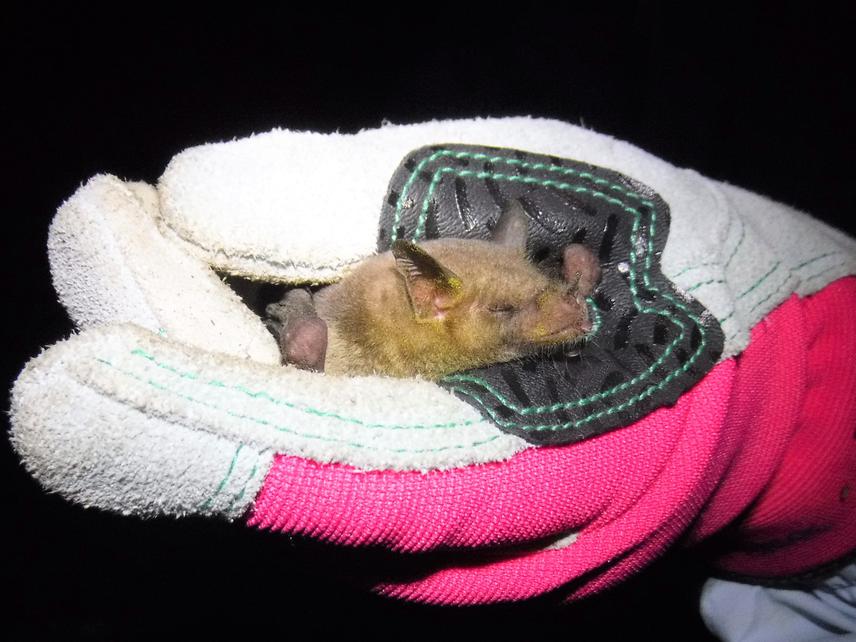Social media video featuring the project.
Looking For The Mexican Long-Nosed Bat
31 Jan 2017 Nuevo León, Mexico, Central and Latin America Communities | Mammals | Bats
Bats, Agaves, and People: Filling Critical Knowledge Gaps and Building Local Capacity to Conserve the Endangered Mexican Long-Nosed Bat and its Foraging Habitat
The aim of this project is to contribute to the development of community bat-friendly agave management programs for the endangered Mexican long-nosed bat (Leptonycteris nivalis).

The endangered Mexican long-nosed bat (Leptonycteris nivalis) has declined by 50% in 15 years, a decline expected to continue without immediate conservation action. Each spring, females migrate 1200km from central Mexico to northeast Mexico and the US Southwest, where they give birth to their young. During this journey, they rely on the nectar of agave plants (Agave spp.) for food. Agaves are also economic and cultural resources for Mexican communities that harvest them for beverages, food, and other products. However, agave harvesting often entails removing the flowering stalks upon which the bats feed, and may be contributing to their declines. To ensure the conservation of this species, we must find locally-appropriate conservation strategies that protect the bats while allowing for community harvest of agaves.
The main goal of this project, which forms the basis of my PhD, is to provide information to develop one such strategy in northeast Mexico: community bat-friendly agave management that enhances bat foraging habitat. Bat-friendly agave management can be achieved, for example, by allowing some agaves to flower in an area or replanting in areas where wild agaves have been harvested. This is especially important in northeast Mexico, which is home to two of the bats’ most critical roosting caves.
I will use an integrative approach that combines the natural and social sciences to complete the following objectives:
1) Identify areas that are important for bat foraging;
2) Determine how to implement bat-friendly practices in ways that are most beneficial to the bats;
3) Identify communities that are most open to adopting bat-friendly practices;
4) Understand how to tailor these practices to the local contexts of each community.
I will address Objectives 1 and 2 through bat foraging studies, agave population surveys, statistical modelling, and Individual-based Modelling. I will address Objectives 3 and 4 through semi-structured interviews and questionnaires with community leaders and agave harvesters. Additionally, I will develop an educational program to enhance communities’ understanding of the ecological and economic importance of pollinating bats and how they can help conserve these endangered bats.
To complete this work, I am collaborating with E-species, Sociedad y Habitat, A.C. (http://eshaconservacion.weebly.com/), a local conservation NGO based in Monterrey, Nuevo León, which will help ensure that the project significantly builds local capacity for bat conservation. Ultimately, this project will facilitate local conservation groups to make and implement well-informed decisions for protecting critical habitat for the endangered Mexican long-nosed bat.
Social media video featuring the project.
Looking For The Mexican Long-Nosed Bat